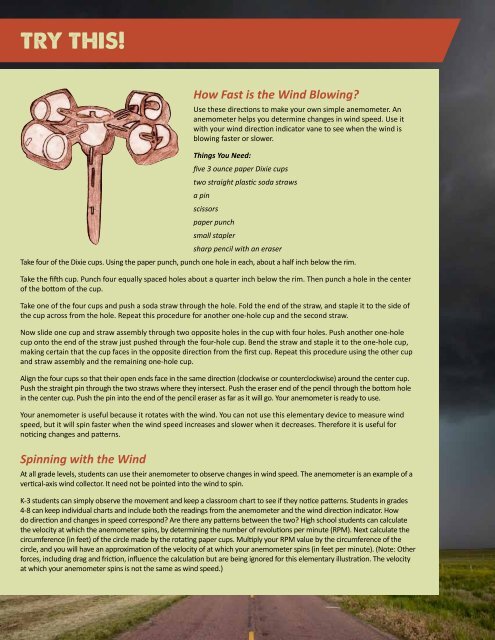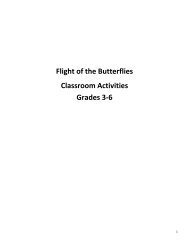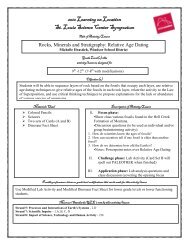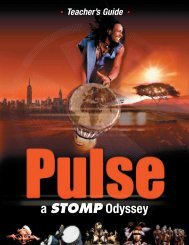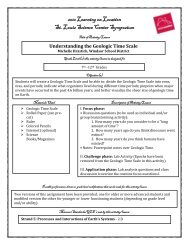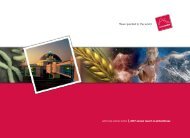Tornado Alley - Big Movie Zone
Tornado Alley - Big Movie Zone
Tornado Alley - Big Movie Zone
You also want an ePaper? Increase the reach of your titles
YUMPU automatically turns print PDFs into web optimized ePapers that Google loves.
How Fast is the Wind Blowing?<br />
Use these directions to make your own simple anemometer. An<br />
anemometer helps you determine changes in wind speed. Use it<br />
with your wind direction indicator vane to see when the wind is<br />
blowing faster or slower.<br />
Things You Need:<br />
five 3 ounce paper Dixie cups<br />
two straight plastic soda straws<br />
a pin<br />
scissors<br />
paper punch<br />
small stapler<br />
sharp pencil with an eraser<br />
Take four of the Dixie cups. Using the paper punch, punch one hole in each, about a half inch below the rim.<br />
Take the fifth cup. Punch four equally spaced holes about a quarter inch below the rim. Then punch a hole in the center<br />
of the bottom of the cup.<br />
Take one of the four cups and push a soda straw through the hole. Fold the end of the straw, and staple it to the side of<br />
the cup across from the hole. Repeat this procedure for another one-hole cup and the second straw.<br />
Now slide one cup and straw assembly through two opposite holes in the cup with four holes. Push another one-hole<br />
cup onto the end of the straw just pushed through the four-hole cup. Bend the straw and staple it to the one-hole cup,<br />
making certain that the cup faces in the opposite direction from the first cup. Repeat this procedure using the other cup<br />
and straw assembly and the remaining one-hole cup.<br />
Align the four cups so that their open ends face in the same direction (clockwise or counterclockwise) around the center cup.<br />
Push the straight pin through the two straws where they intersect. Push the eraser end of the pencil through the bottom hole<br />
in the center cup. Push the pin into the end of the pencil eraser as far as it will go. Your anemometer is ready to use.<br />
Your anemometer is useful because it rotates with the wind. You can not use this elementary device to measure wind<br />
speed, but it will spin faster when the wind speed increases and slower when it decreases. Therefore it is useful for<br />
noticing changes and patterns.<br />
Spinning with the Wind<br />
At all grade levels, students can use their anemometer to observe changes in wind speed. The anemometer is an example of a<br />
vertical-axis wind collector. It need not be pointed into the wind to spin.<br />
K-3 students can simply observe the movement and keep a classroom chart to see if they notice patterns. Students in grades<br />
4-8 can keep individual charts and include both the readings from the anemometer and the wind direction indicator. How<br />
do direction and changes in speed correspond? Are there any patterns between the two? High school students can calculate<br />
the velocity at which the anemometer spins, by determining the number of revolutions per minute (RPM). Next calculate the<br />
circumference (in feet) of the circle made by the rotating paper cups. Multiply your RPM value by the circumference of the<br />
circle, and you will have an approximation of the velocity of at which your anemometer spins (in feet per minute). (Note: Other<br />
forces, including drag and friction, influence the calculation but are being ignored for this elementary illustration. The velocity<br />
at which your anemometer spins is not the same as wind speed.)


